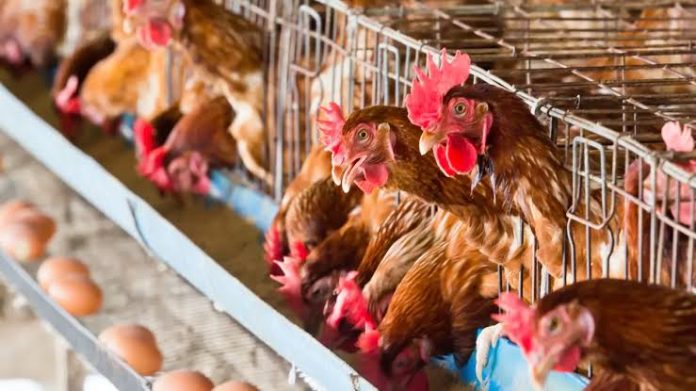 GET THIS NOW: AUTOMATED INCOME MACHINE
GET THIS NOW: AUTOMATED INCOME MACHINE
How to Prevent Decline in Egg Quality Late Egg Production (One)
The egg quality problem can be a huge headache often encountered by layer chicken farmers, especially in the late stage of egg production. The problem of egg quality is more prominent, and some farmers even have to eliminate them prematurely due to egg quality problems. The result is huge economic losses to layer chicken farmers
According to statistics, about 6-8% of eggs are lost in the world every year due to egg quality problems. There are many factors that affect the quality of eggs, and we mainly put forward preventive solutions to some common problems in production.
 Learn More
Learn More
1. Disease Prevention and Control
1.1 Strengthening immunization of Newcastle disease, avian influenza and spreading vaccines in the late egg production period
Most diseases such as Newcastle disease, avian influenza, and spreading can cause egg quality degradation. For epidemic prevention and control, strengthening biological safety management is the most direct and effective measure, but for the over intensive farming situation of laying chickens, strengthening immunization to ensure that chickens have disease prevention capabilities is the top priority. Respiratory administration is a good method to improve the immune system. By dissolving the drug in water to use as a fogger sprayer, when the chicken breathes the medicine in it will be absorbed in their body.
In recent years, farmers’ awareness of the prevention of epidemics has increased, and they have been immunized multiple times for preventing severe infectious diseases. The probability of large-scale outbreaks of severe infectious diseases is getting smaller and smaller, but these epidemics still exist. As long as the antibody drops to a certain extent, it will first affect the quality of eggs. At present, the immunization of Newcastle disease, avian influenza and spreading in late egg production is often the most easily overlooked problem. The serious decline in egg quality in the late egg production is often caused by these diseases.
READ ALSO Why Chickens Laying Thin-shell Eggs (Feed factors) and How to Prevent?
1.2 Do a thorough job of checking the intestinal and liver health of laying chickens
Intestinal and liver diseases of laying hens are another important problem that often causes the quality of eggs to decline.

The intestinal tract is the absorption site of nutrients. Diseases in the intestinal tract cause diarrhea, overfeeding, red dung, etc., which will lead to a decrease in the absorption and utilization of intestinal nutrients, thus affecting the quality of eggs. There are currently many options for intestinal health, such as plant-based essential oils, micro-ecological preparations, acid preparations, and Chinese herbal medicines that can be used as regular, irregular, or long-term health care solutions for the intestine.
Purchase this compelling ebook instantly. 
 33 fundamentals for poultry layer production management
33 fundamentals for poultry layer production management
The liver is an important place for carbohydrate hydration, fat and protein synthesis, and conversion and metabolism in the body. It is also an important place for the storage of fat-soluble vitamins. At the same time, the liver plays a role in detoxification. It also effects various toxins and often leads to a decline in liver function and a reduction in the utilization of feed nutrients. Liver health care can add 60 ppm bile acid to the feed over the long run as a health care program.
2. Management of Environment & Egg Weight
2.1 Strengthen feeding environment control
Inappropriate light, temperature and stress can cause egg quality to decline.
The length of light intensity has a significant effect on the quality of the eggshell. Sudden increase in light intensity will reduce the quality of the eggshell and lead to an increase in the number of broken eggs. Dim lights will help to keep the house quiet and is beneficial to the formation of eggshells. The light length of laying hens is currently 16 hours of light. Because chickens’ eyes are different from human’s, professional LED lights not only have a positive effect on the chicken laying rate, but also have good qualities to resist water, fire and ammonia.
READ ALSO How to Brood & Care for a Day Old Turkey
The temperature has a significant influence on the quality of the eggshell. The suitable temperature for laying hens is 22-27℃. When the temperature of the house exceeds 32℃, the feed intake of the chicken decreases and the breathing speeds up, resulting in a decrease in egg production rate. The quality of the eggshell becomes brittle, and the surface is rough. If the temperature of the house is too low, the feed intake of the chicken increases, resulting in production of eggs that become larger as the shell thins. You can use an ice fog machine to make the chicken house cool.
Stress is also an important factor that causes the quality of eggshells to decline during production, such as high temperature, immunization, noise, and shock, which will affect the intestinal absorption of nutrients and the normal formation of eggshells. Under heat stress conditions, baking soda can be added to the feed while reducing the salt content to improve the outcome.
Invest in this knowledge-packed ebook promptly.  39 fundamentals for poultry broiler production management
39 fundamentals for poultry broiler production management
2.2 Manage layer and egg weight
Oversized eggs in the late egg laying period is also an important factor that leads to a decline in egg quality. As the age of laying hens increases, the size of the eggs gradually increases, but the increase in the weight of the eggshell is much smaller than the increase in the weight of the eggs. This results in a relatively insufficient absorption and deposition of calcium and phosphorus. At present, many farmers are blindly pursuing high output and eliminating the heavy weight of chickens. The rearing of laying hens is getting larger and larger, and the weight of eggs is getting larger, but the quality of eggs is getting worse.
ATTENTION: Click “HERE” to join our WhatsApp group and receive More updates directly on your WhatsApp!
The size of the egg is directly affected by the size of the yolk, and the size of the yolk is mainly affected by the weight of the egg. Therefore, the weight of the egg must be controlled first. After the hens enter the peak period, the weight of the hen should be controlled as to not grow too fast. In terms of egg weight management, managing the weight of laying hens also requires the management of feed nutrition. Protein, amino acids (methionine), fatty acids and energy in the feed are also important factors affecting egg weight.















